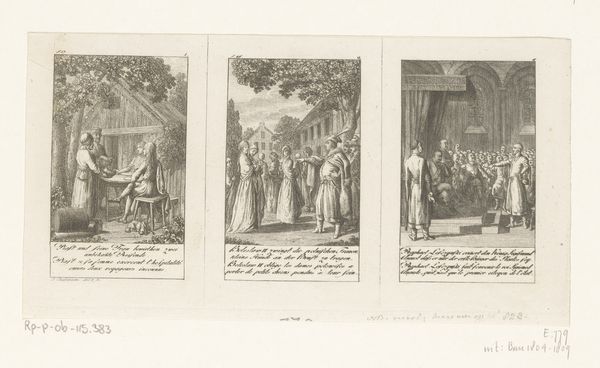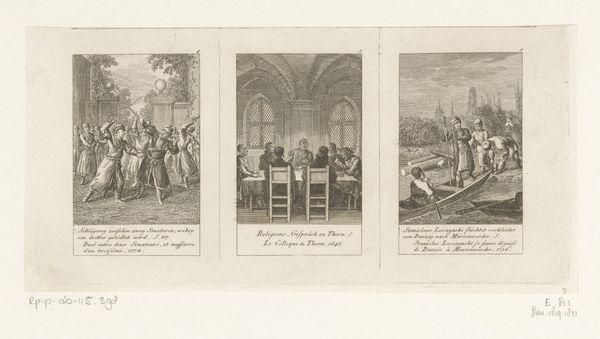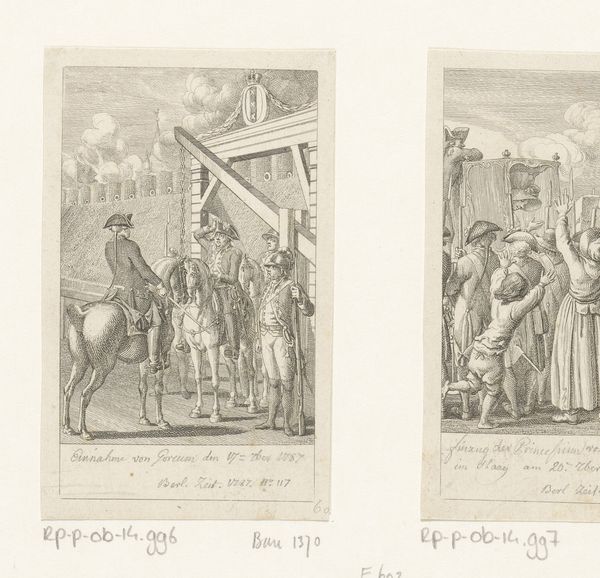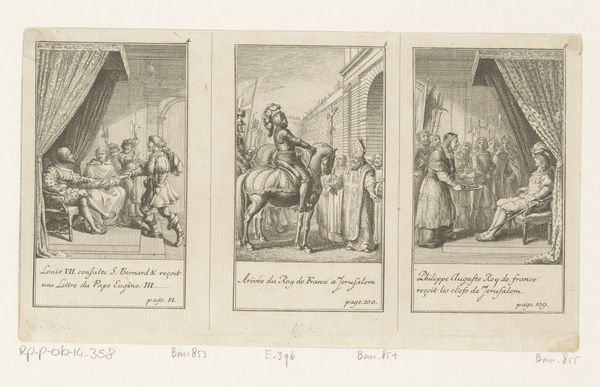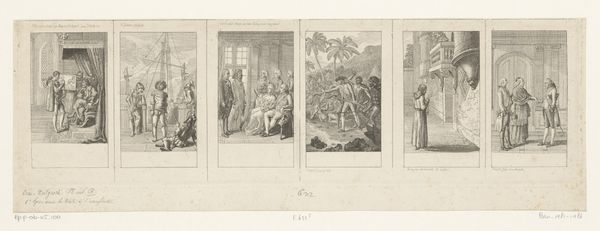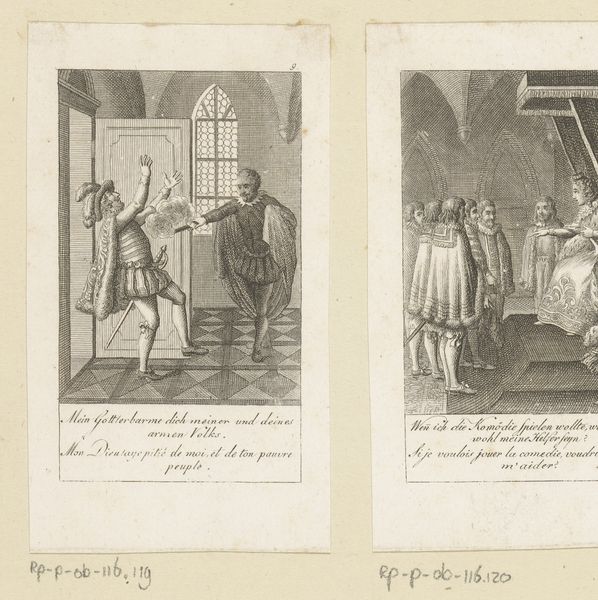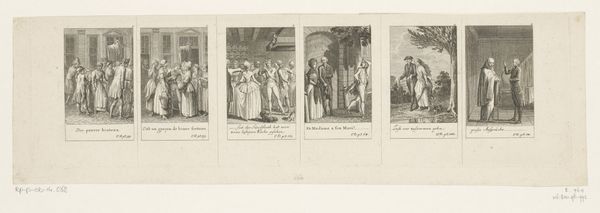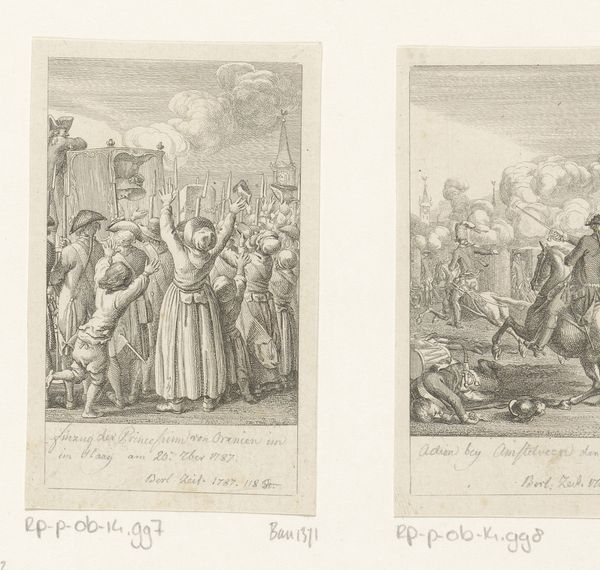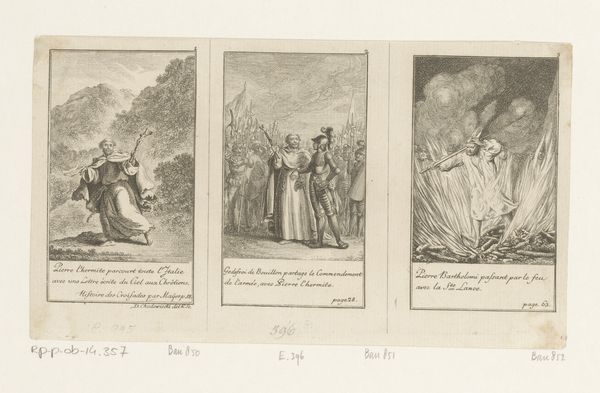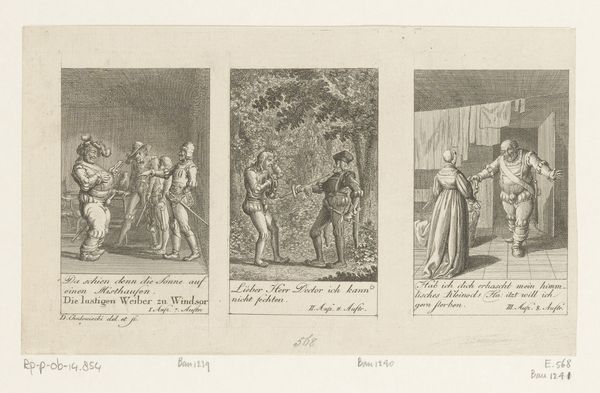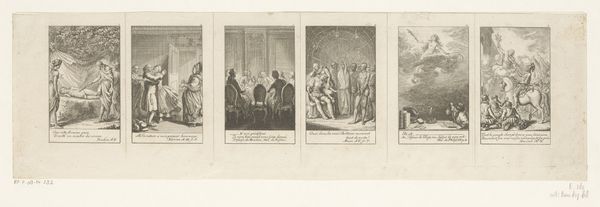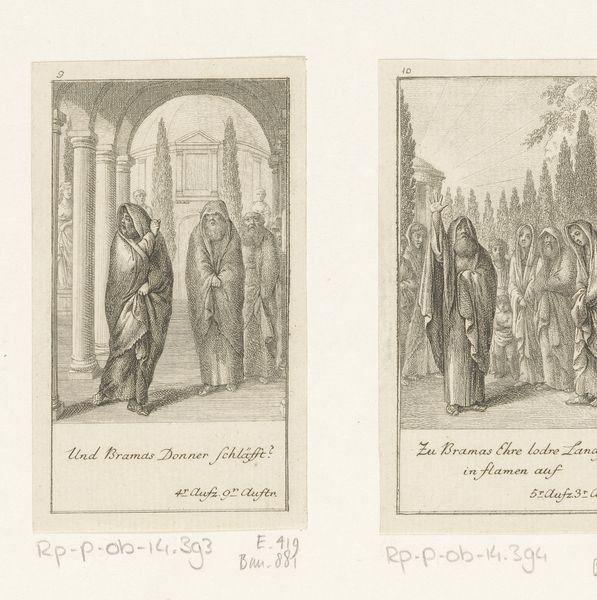
Dimensions: height 96 mm, width 58 mm
Copyright: Rijks Museum: Open Domain
Editor: We're looking at "Willem Tell schiet de appel van Walters hoofd" from 1790, by Daniel Nikolaus Chodowiecki. It's a small engraving. The detail is incredible, but I'm immediately drawn to the contrast between the meticulously rendered figures and the rougher depiction of the natural setting. What's your take on this, focusing on its material production? Curator: Considering it as a print, an inherently reproducible medium, is vital. Its existence challenges traditional notions of the singular art object, especially within the context of the late 18th century and ideas of national identity, which is part of the image narrative itself. The line work is incredibly detailed – imagine the artisan's labor involved in creating the matrix, the careful etching process and skill involved. What impact do you think the reproducibility had in shaping its social and political impact at the time? Editor: So, this wasn’t meant to be a unique object displayed in a palace, but something accessible, spread around… like propaganda almost? I hadn’t thought of it that way. Curator: Precisely. Think about the accessibility of printed imagery in spreading narratives – shaping popular perceptions of heroism, rebellion, and the struggle for freedom. Now look again at the details. Chodowiecki has other works depicting daily life, a democratisation of image production in itself, no longer grand history painting but relatable, small scale prints, and disseminated in vast numbers. What does it tell us that history has depicted some scenes rather than others? What does *this* labour contribute to *that* labour? Editor: It completely reframes my understanding of the piece. It's not just an image of a legend, it’s a commodity with a purpose, distributed and consumed. Curator: And think about the audience’s participation in interpreting the story, sharing the image, perhaps even colouring it by hand – an active rather than passive experience! Materiality, in this case, extends beyond the print itself to include a network of makers, sellers, and consumers all interacting with the piece. Editor: It makes you consider all the hands that have touched it, the messages it conveyed, the ideas it helped to spread! Curator: Exactly. Focusing on production unveils its potential as a social and political agent, prompting us to think about who created it, for whom, and with what intention. It adds another layer to this already captivating narrative.
Comments
No comments
Be the first to comment and join the conversation on the ultimate creative platform.
